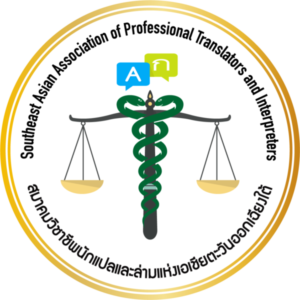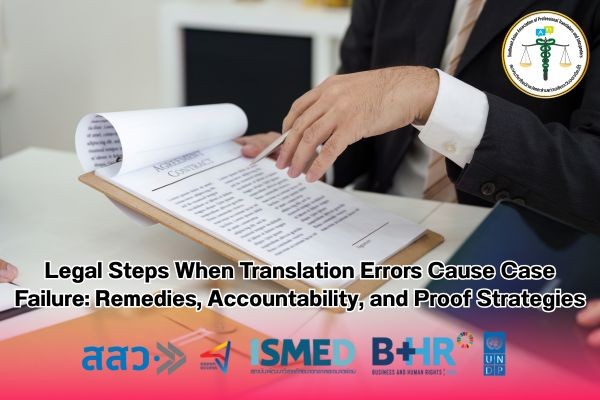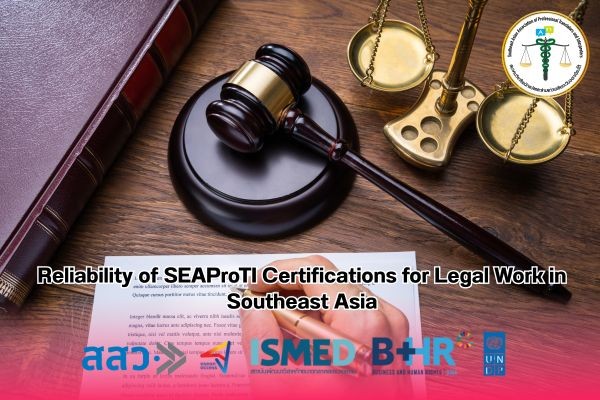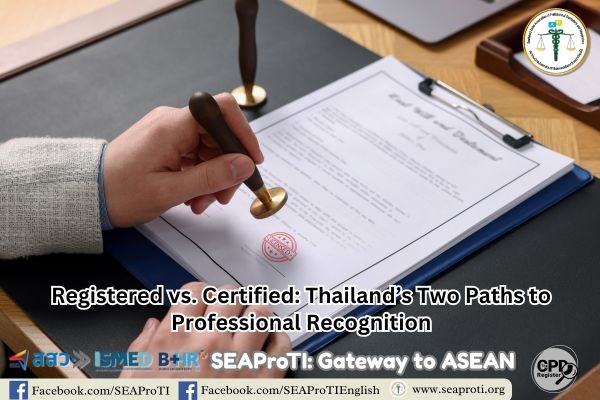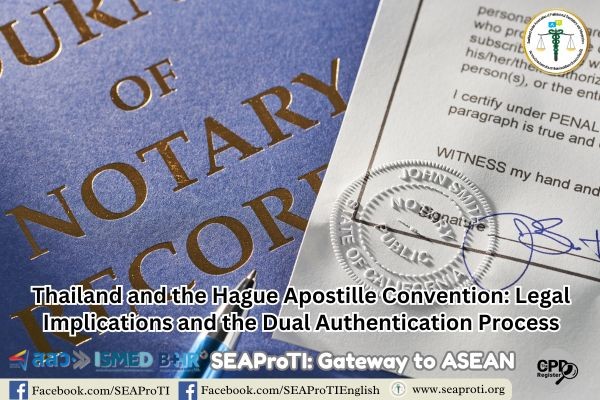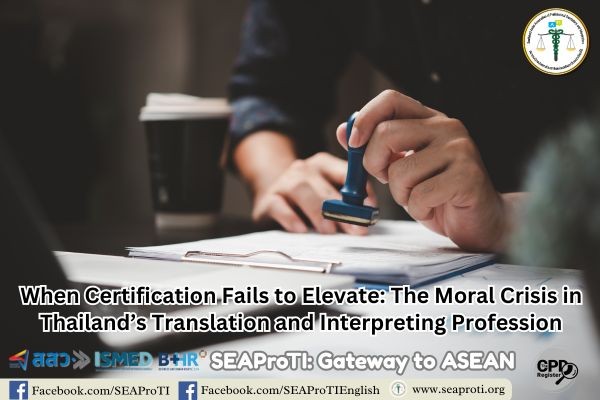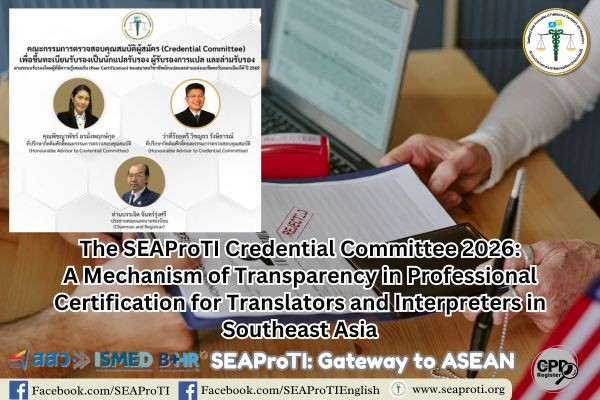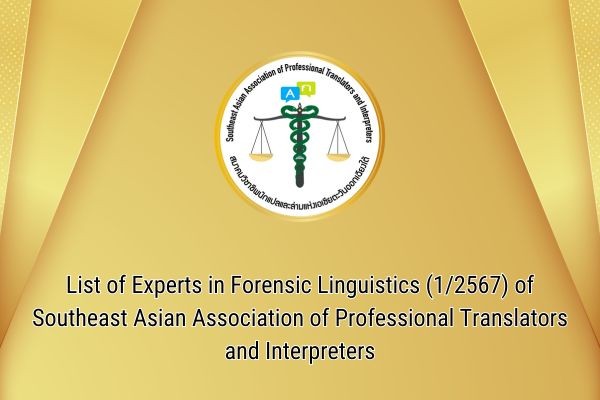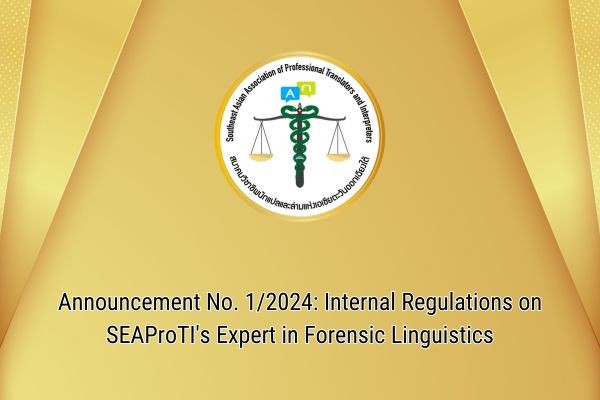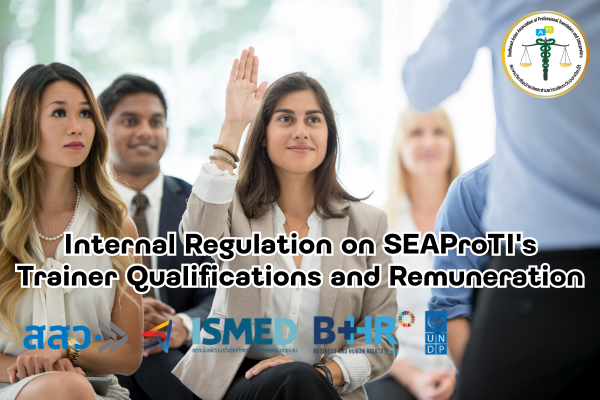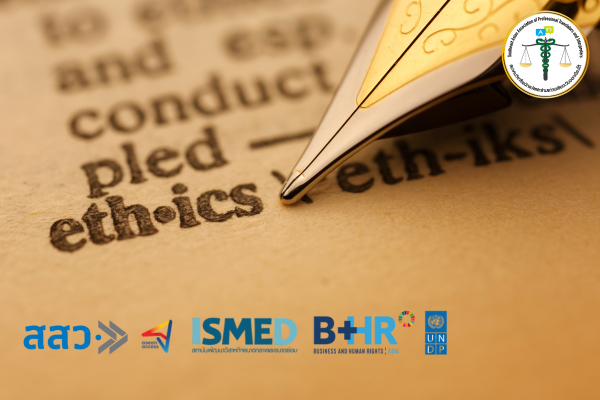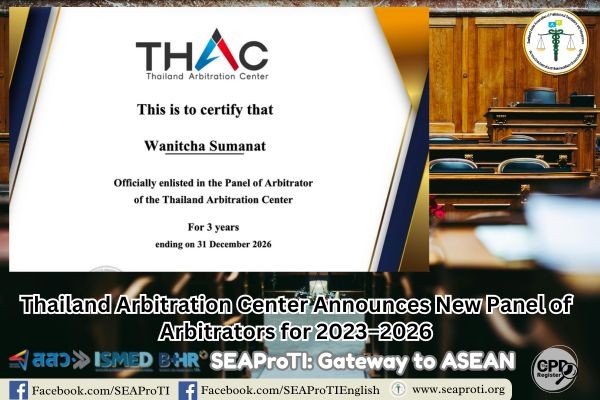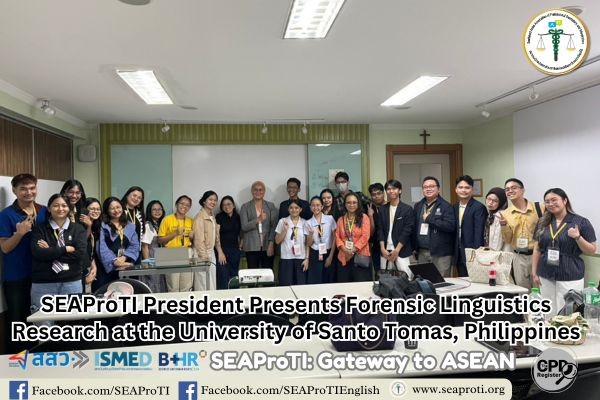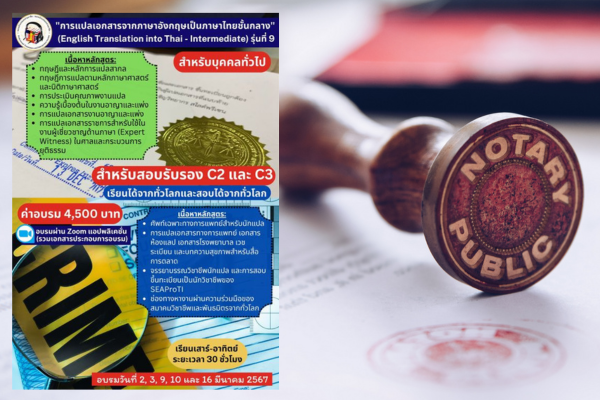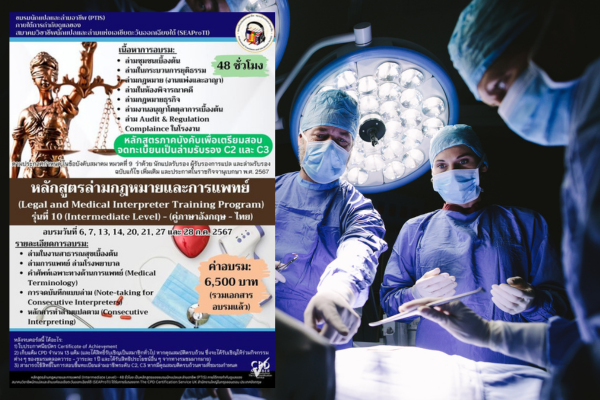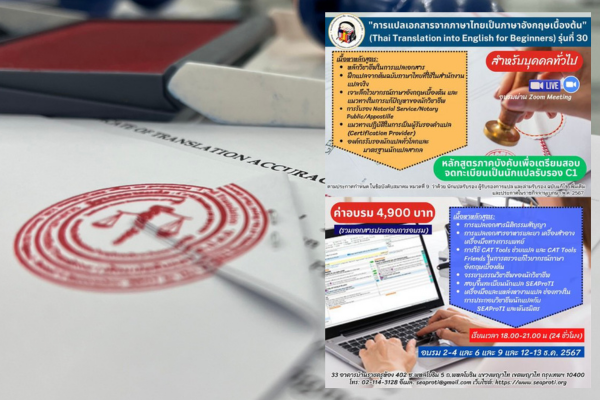Legal Steps When Translation Errors Cause Case Failure: Remedies, Accountability, and Proof Strategies
17 August 2025, Bangkok – Errors in translation and interpretation within judicial contexts can have far-reaching consequences, including wrongful convictions, miscarriages of justice, and financial harm. This article examines the legal avenues available when mistranslation or interpretation errors materially affect case outcomes. It reviews trial-level objections, appellate remedies, post-judgment relief, and administrative as well as civil accountability, emphasizing strategies for proving prejudice and materiality.
Introduction
Translation accuracy is indispensable in legal proceedings, particularly where language barriers impact due process rights. Courts and litigants rely on interpreters and translators to ensure faithful communication of evidence, rights, and legal arguments. However, mistranslations—whether in live interpretation or written documents—can undermine justice. When such errors occur, procedural safeguards and remedial steps exist to mitigate harm. This article explores legal responses to translation errors that cause case failures.
Immediate Priorities in Addressing Errors
The first response must be preservation of the evidentiary record. This includes transcripts, audio or video recordings, original-language documents, and interpreter renditions. Once preserved, an independent linguist’s expert report should be commissioned to compare the source with the interpretation, highlighting inaccuracies and their material relevance (Hale, 2011). Documenting prejudice—the concrete effect on the judgment or verdict—is crucial, as courts focus on material harm rather than minor discrepancies (González, Vásquez, & Mikkelson, 2012).
Trial-Level Remedies
If the case is ongoing, parties must object promptly to mistranslations to preserve the issue for appeal. Typical measures include:
- Sidebar inquiries and read-backs for clarification.
- Corrective instructions or re-questioning of witnesses.
- Continuance to allow for corrected interpretation.
Mistrial motions when errors irreparably affect fairness.
Timely objection ensures the trial court has an opportunity to cure the defect, which appellate courts generally require (Berk-Seligson, 2017).
Post-Judgment Relief and Appeals
When a case concludes, mistranslation can form grounds for appeal or extraordinary relief:
- Direct appeal: Courts review whether interpreter errors deprived due process. Success depends on showing contemporaneous objection and material prejudice.
- Plain-error review: If no objection was made, appellate courts may still reverse if errors caused fundamental unfairness.
- Motions for new trial or relief from judgment: Newly discovered translation errors may justify retrial if diligence and materiality are proven.
Central to all these arguments is framing translation mistakes as material to the court’s findings rather than peripheral errors.
Administrative and Professional Accountability
Interpreter performance is subject to administrative oversight and professional discipline. Complaints can be filed with judicial administration or ministries overseeing interpreter rosters. Professional associations may suspend or decertify practitioners who violate accuracy and impartiality standards (Hertog, 2001). These mechanisms protect institutional integrity while reinforcing professional ethics.
Civil and Criminal Liability of Interpreters and Agencies
Beyond judicial remedies, harmed parties may pursue civil actions against negligent interpreters or agencies. Claims include professional negligence or breach of contract, often requiring expert testimony to establish a deviation from professional standards (Mikkelson, 2017). In rare cases of intentional falsification, criminal liability such as perjury or obstruction may apply, though this remains jurisdiction-dependent.
Proof Strategies
- Litigants must establish a clear causal chain:
- Specific mistranslation occurred.
- Misapprehension of evidence/rights followed.
- Adverse ruling resulted.
- Expert analysis and transcript citations strengthen arguments. When no objection was raised contemporaneously, counsel must explain barriers (e.g.,
- linguistic unawareness) and rely on extraordinary relief doctrines.
Written Translation Errors in Court
Errors in documentary translation carry similar risks. Faulty translations of contracts, affidavits, or evidentiary exhibits may be struck and replaced with corrected certified translations. If errors influenced rulings materially, reopening of evidence or a new trial may be justified (Ortega Herráez & Giambruno, 2020). Parallel civil suits against translation providers may also be viable.
Conclusion and Recommendations
Translation and interpretation errors threaten fairness in judicial proceedings. Remedies exist across trial, appellate, administrative, and civil dimensions, but success requires proving material prejudice. The recommended strategy is threefold:
- Preserve all records and commission expert reports.
- Pursue timely objections or post-judgment motions grounded in materiality.
- File administrative complaints and consider civil remedies to address accountability.
Ultimately, building a robust evidentiary chain connecting mistranslation to adverse outcomes is the cornerstone of successful relief.
References
Berk-Seligson, S. (2017). The bilingual courtroom: Court interpreters in the judicial process (2nd ed.). University of Chicago Press.
González, R. D., Vásquez, V. F., & Mikkelson, H. (2012). Fundamentals of court interpretation: Theory, policy, and practice. Carolina Academic Press.
Hale, S. (2011). Interpreter policies, practices and protocols in Australian courts and tribunals: A national survey. Sydney: The University of New South Wales.
Hertog, E. (2001). Aequitas: Access to justice across language and culture in the EU. Antwerp: Lessius Hogeschool.
Mikkelson, H. (2017). Professional ethics and accountability for court interpreters. Translation & Interpreting, 9(1), 24–35.
Ortega Herráez, J. M., & Giambruno, C. (2020). Interpreting quality and legal consequences: Re-examining interpreter errors in legal contexts. The Interpreter and Translator Trainer, 14(3), 311–327.
About Certified Translators, Translation Certification Providers, and Certified Interpreters of SEAProTI
The Southeast Asian Association of Professional Translators and Interpreters (SEAProTI) has formally established qualifications and criteria for registered members as Certified Translators, Translation Certification Providers, and Certified Interpreters, published in the Royal Thai Government Gazette, Book 141, Part 66 Ng, Page 100, dated 25 July 2024, by the Secretariat of the Cabinet, Office of the Prime Minister of the Kingdom of Thailand. Full text available: The Royal Thai Government Gazette
SEAProTI is the first professional association in Thailand and Southeast Asia to institute a certification system for Certified Translators, Translation Certification Providers, and Certified Interpreters.
Head Office: Baan Rajakru Building, Room 402, No. 33, Soi Phaholyothin 5, Phaholyothin Road, Phaya Thai Subdistrict, Phaya Thai District, Bangkok 10400 Email: hello@seaproti.com | Tel: (+66) 2-114-3128 (Office Hours: Monday–Friday, 09:00–17:00)
ขั้นตอนทางกฎหมายเมื่อความผิดพลาดในการแปลทำให้คดีล้มเหลว: มาตรการแก้ไข ความรับผิด และกลยุทธ์การพิสูจน์
17 สิงหาคม 2568, กรุงเทพมหานคร – ความผิดพลาดในการแปลหรือการล่ามในกระบวนการยุติธรรมสามารถก่อให้เกิดผลร้ายแรง ตั้งแต่การพิพากษาที่ไม่เป็นธรรม การละเมิดสิทธิ ไปจนถึงความเสียหายทางการเงิน บทความนี้วิเคราะห์แนวทางทางกฎหมายที่สามารถใช้ได้เมื่อความผิดพลาดดังกล่าวมีผลโดยตรงต่อผลคดี โดยครอบคลุมมาตรการในชั้นพิจารณา อุทธรณ์ การเพิกถอนคำพิพากษา มาตรการทางวินัย และความรับผิดทางแพ่งหรืออาญา พร้อมทั้งเน้นย้ำความสำคัญของการพิสูจน์ “ความเสียหายที่มีนัยสำคัญ” (material prejudice)
บทนำ
การแปลที่ถูกต้องถือเป็นหัวใจสำคัญของความยุติธรรม โดยเฉพาะในคดีที่คู่ความไม่สามารถใช้ภาษาในศาลได้เอง ศาลและคู่ความพึ่งพานักแปลและล่ามเพื่อสื่อสารสิทธิ พยานหลักฐาน และข้อกฎหมาย หากเกิดความผิดพลาด ผลของคดีอาจถูกบิดเบือนอย่างร้ายแรง บทความนี้นำเสนอแนวทางปฏิบัติและกลไกทางกฎหมายเพื่อรับมือกับความผิดพลาดในการแปลที่ส่งผลกระทบต่อคดี
การดำเนินการเร่งด่วนเมื่อพบความผิดพลาด
เมื่อพบข้อผิดพลาด สิ่งแรกที่ต้องทำคือ เก็บรักษาหลักฐาน ได้แก่ บันทึกการพิจารณา คำสั่งศาล ไฟล์เสียงหรือวิดีโอ ต้นฉบับภาษาเดิม และคำแปลหรือคำล่าม จากนั้นควรจัดทำ รายงานผู้เชี่ยวชาญทางภาษา เพื่อตรวจสอบและชี้ชัดข้อผิดพลาด พร้อมทั้งอธิบายผลกระทบที่มีต่อคำพิพากษา ศาลมักจะพิจารณาความเสียหายเชิง “สาระสำคัญ” มากกว่าความคลาดเคลื่อนเล็กน้อยที่เลี่ยงไม่ได้ (Hale, 2011; González, Vásquez, & Mikkelson, 2012)
มาตรการแก้ไขในชั้นพิจารณา
หากคดียังไม่สิ้นสุด คู่ความสามารถยกประเด็นคัดค้านได้ทันทีเพื่อเก็บบันทึกไว้ในสำนวน และขอให้ศาลใช้มาตรการแก้ไข เช่น:
- สอบถามเพิ่มเติม (sidebar inquiry) หรือขอให้ล่าม/พยานกล่าวซ้ำ
- คำสั่งแก้ไข หรือให้มีการถามพยานใหม่
- เลื่อนการพิจารณา เพื่อหาล่ามหรือคำแปลที่ถูกต้อง
- ขอให้ศาลสั่งพิจารณาใหม่ (mistrial) หากความผิดพลาดร้ายแรงจนแก้ไขไม่ได้
- การคัดค้านอย่างทันท่วงทีช่วยให้ศาลแก้ไขได้ และยังเป็นการรักษาสิทธิสำหรับการอุทธรณ์ภายหลัง (Berk-Seligson, 2017)
การอุทธรณ์และการเพิกถอนคำพิพากษา
เมื่อคดีสิ้นสุดแล้ว สามารถใช้ช่องทางดังต่อไปนี้:
- อุทธรณ์โดยตรง: โต้แย้งว่าความผิดพลาดทำให้ขาดความเป็นธรรม โดยต้องมีการคัดค้านไว้ในสำนวน
- การทบทวนตามหลัก plain error: หากไม่มีการคัดค้านในชั้นพิจารณา ศาลอุทธรณ์อาจยังรับวินิจฉัยหากข้อผิดพลาดกระทบสิทธิขั้นพื้นฐานอย่างร้ายแรง แม้จะเกิดขึ้นไม่บ่อยนัก
- คำร้องขอให้พิจารณาคดีใหม่: หากค้นพบหลักฐานใหม่ เช่น รายงานผู้เชี่ยวชาญที่ไม่อาจได้มาในระหว่างพิจารณา
- สิ่งสำคัญคือการชี้ให้เห็นว่า ความผิดพลาดเกี่ยวข้องกับ “ประเด็นสำคัญ” ไม่ใช่เรื่องเล็กน้อย
ความรับผิดทางวินัยและมาตรการเชิงวิชาชีพ
หากผู้แปลหรือผู้ล่ามมาจากบัญชีศาลหรือได้รับการแต่งตั้งโดยหน่วยงานรัฐ ผู้เสียหายสามารถยื่นเรื่องร้องเรียนต่อสำนักงานศาลหรือหน่วยงานกำกับดูแล เพื่อให้ตรวจสอบและดำเนินการทางวินัย เช่น ตักเตือน ระงับสิทธิ หรือเพิกถอนการขึ้นทะเบียน (Hertog, 2001) นอกจากนี้ องค์กรวิชาชีพอาจพิจารณาดำเนินมาตรการทางจริยธรรม เช่น การเพิกถอนการรับรอง
ความรับผิดทางแพ่งและอาญา
คู่ความที่ได้รับความเสียหายสามารถฟ้องร้องทางแพ่งต่อผู้แปล/ล่ามหรือบริษัทจัดหาล่ามได้ โดยอ้างฐานความประมาทเลินเล่อ (negligence) หรือผิดสัญญา พร้อมใช้พยานผู้เชี่ยวชาญเพื่อแสดงว่ามีการละเมิดมาตรฐานวิชาชีพ (Mikkelson, 2017) ส่วนความรับผิดทางอาญาจะเกิดขึ้นเฉพาะกรณีเจตนาบิดเบือนหรือให้การเท็จ ซึ่งพบได้น้อยและขึ้นกับกฎหมายของแต่ละประเทศ
กลยุทธ์ในการพิสูจน์ความเสียหาย
- เพื่อให้การอ้างสิทธิเกิดผล จำเป็นต้องสร้างสายเหตุผลที่ชัดเจนว่า:
- มีการแปลผิดพลาดเกิดขึ้นจริง
- ความผิดพลาดทำให้เกิดความเข้าใจผิดในข้อเท็จจริง/สิทธิ
- ส่งผลให้ศาลมีคำพิพากษาที่ไม่เป็นคุณ
- หากไม่ได้คัดค้านในทันที ต้องอธิบายเหตุผล เช่น ข้อจำกัดทางภาษา หรือเพิ่งตรวจพบจากบันทึกเสียง/วิดีโอ แล้วใช้กลไกการอุทธรณ์แบบพิเศษเพื่อขอให้ศาลทบทวน
ความผิดพลาดจากการแปลเอกสาร
หากเป็นเอกสาร เช่น สัญญา คำให้การ หรือพยานหลักฐานที่แปลผิดพลาด คู่ความสามารถขอให้ศาลเพิกถอนหรือแทนที่ด้วยคำแปลที่ได้รับการรับรองใหม่ หากเอกสารนั้นมีผลต่อคำพิพากษาอย่างมีนัยสำคัญ ศาลอาจสั่งให้พิจารณาใหม่ได้ (Ortega Herráez & Giambruno, 2020)
สรุปและข้อเสนอแนะ
ความผิดพลาดในการแปลสามารถบั่นทอนกระบวนการยุติธรรมอย่างร้ายแรง การแก้ไขจำเป็นต้องอาศัยหลายมิติ ได้แก่ การคัดค้านในทันที การอุทธรณ์ การเพิกถอนคำพิพากษา การร้องเรียนเชิงวินัย และการฟ้องร้องทางแพ่ง/อาญา กลยุทธ์สำคัญคือการ เชื่อมโยงข้อผิดพลาดกับผลคดีโดยตรง พร้อมสนับสนุนด้วยหลักฐานเชิงผู้เชี่ยวชาญ
เอกสารอ้างอิง
- Berk-Seligson, S. (2017). The bilingual courtroom: Court interpreters in the judicial process (2nd ed.). University of Chicago Press.
- González, R. D., Vásquez, V. F., & Mikkelson, H. (2012). Fundamentals of court interpretation: Theory, policy, and practice. Carolina Academic Press.
- Hale, S. (2011). Interpreter policies, practices and protocols in Australian courts and tribunals: A national survey. Sydney: The University of New South Wales.
- Hertog, E. (2001). Aequitas: Access to justice across language and culture in the EU. Antwerp: Lessius Hogeschool.
- Mikkelson, H. (2017). Professional ethics and accountability for court interpreters. Translation & Interpreting, 9(1), 24–35.
- Ortega Herráez, J. M., & Giambruno, C. (2020). Interpreting quality and legal consequences: Re-examining interpreter errors in legal contexts. The Interpreter and Translator Trainer, 14(3), 311–327.
เกี่ยวกับนักแปลรับรอง ผู้รับรองการแปล และล่ามรับรองของสมาคมวิชาชีพนักแปลและล่ามแห่งเอเชียตะวันออกเฉียงใต้
สมาคมวิชาชีพนักแปลและล่ามแห่งเอเชียตะวันออกเฉียงใต้ (SEAProTI) ได้ประกาศหลักเกณฑ์และคุณสมบัติผู้ที่ขึ้นทะเบียนเป็น “นักแปลรับรอง (Certified Translators) และผู้รับรองการแปล (Translation Certification Providers) และล่ามรับรอง (Certified Interpreters)” ของสมาคม หมวดที่ 9 และหมวดที่ 10 ในราชกิจจานุเบกษา ของสำนักเลขาธิการคณะรัฐมนตรี ในสำนักนายกรัฐมนตรี แห่งราชอาณาจักรไทย ลงวันที่ 25 ก.ค. 2567 เล่มที่ 141 ตอนที่ 66 ง หน้า 100 อ่านฉบับเต็มได้ที่: นักแปลรับรอง ผู้รับรองการแปล และล่ามรับรอง
*สมาคมวิชาชีพนักแปลและล่ามแห่งเอเชียตะวันออกเฉียงใต้ เป็นสมาคมวิชาชีพแห่งแรกในประเทศไทยและภูมิภาคเอเชียตะวันออกเฉียงใต้ที่มีระบบรับรองนักแปลรับรอง ผู้รับรองการแปล และล่ามรับรอง
สำนักงานใหญ่: อาคารบ้านราชครู เลขที่ 33 ห้อง 402 ซอยพหลโยธิน 5 ถนนพหลโยธิน แขวงพญาไท เขตพญาไท กรุงเทพมหานคร 10400 อีเมล: hello@seaproti.com โทรศัพท์: (+66) 2-114-3128 (เวลาทำการ: วันจันทร์–วันศุกร์ เวลา 9.00–17.00 น.)

